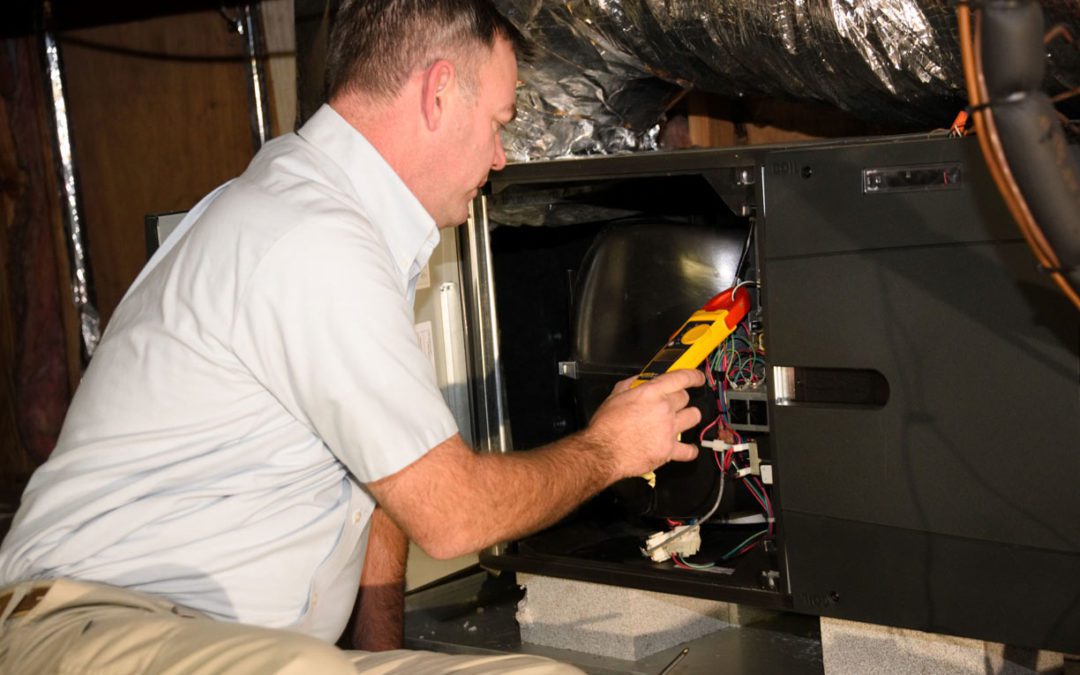As the temperatures on James Island drop, the last thing you want is for your heater to betray you by blowing cold air. It’s a perplexing situation that can leave you shivering and seeking answers. In this article, we’ll unravel why your heater might be blowing cold air and explore a range of possible causes, from minor issues to more complex malfunctions. Armed with knowledge, you can diagnose the problem and take steps to restore warmth to your home.
1. Thermostat Issues
One of the most common reasons a heater blows cold air is thermostat-related issues. The thermostat is the control center of your heating system, regulating the temperature and signaling the furnace to turn on or off. If the thermostat is set incorrectly, malfunctioning, or reading the temperature inaccurately, it can cause your heater to blow cold air. To ensure that the thermostat is set to the desired temperature, consider replacing the batteries; if problems persist, it may be time to replace the thermostat.
2. Pilot Light or Ignition Problems
In gas-powered furnaces, the pilot light or ignition system is crucial in initiating the heating process. If the pilot light is out or the ignition system is faulty, the furnace may fail to produce heat, resulting in cold air blowing through the vents. Check the pilot light—if it’s out, relight it according to the manufacturer’s instructions. If the ignition system is malfunctioning, it’s advisable to request an appointment with a professional HVAC technician to diagnose and address the issue.
3. Dirty or Clogged Filters
Over time, your system’s air filters can become clogged with dust and debris. When filters are dirty, they restrict the airflow, causing the furnace to overheat. As a safety measure, many furnaces shut off the burners when overheating is detected, resulting in cold air circulation. Regularly replacing your air filters is a simple DIY task that’s an effective way to maintain the efficiency of your heating system.
4. Blocked or Closed Vents
Blocked or closed vents can impede the flow of warm air into your living spaces. Check all vents throughout your home to ensure they are open and unobstructed. Furniture, curtains, or other objects may unintentionally block ducts, preventing warm air from reaching its destination. Maintaining precise airflow is essential for efficient heating, so make sure all the vents are free from obstruction.
5. Malfunctioning Thermocouple
The thermocouple is a safety device in gas furnaces that senses the pilot light’s presence. If the thermocouple malfunctions, it may shut off the gas supply, preventing the burners from igniting and causing cold air to blow through the vents. A faulty thermocouple requires professional attention and replacing it can restore the proper functioning of your gas furnace.
6. Issues with the Gas Valve
The gas valve controls the flow of gas to the furnace burners. If the gas valve is malfunctioning or stuck in the closed position, the furnace won’t receive the necessary fuel to produce heat. Gas valve issues can result from wear and tear, electrical malfunctions, or debris accumulation. Diagnosing and repairing gas valve problems should be left to qualified HVAC technicians to ensure safety and proper functionality.
7. Undersized Furnace
If your furnace is too small for the heating demands of your home, it may need help to maintain a comfortable temperature. An undersized furnace will work continuously and may only produce lukewarm air. Investing in an appropriately sized furnace is crucial for efficient heating and scheduling an appointment with a professional HVAC technician who can help determine the appropriate size for your home.
8. Ductwork Issues
Leaks, blockages, or poorly insulated ductwork can compromise the efficiency of your heating system. If warm air is escaping or cold air is infiltrating the ducts, the result is uneven heating and the perception of cold air blowing from the vents. Inspecting and repairing ductwork, including sealing leaks and ensuring proper insulation, can enhance the overall performance of your heating system.
9. Malfunctioning Blower Motor
The blower motor distributes warm air throughout your home. If the blower motor malfunctions, it may not effectively circulate the heated air, leading to cold spots and the sensation of cold air blowing from the vents. Strange noises, reduced airflow, or the complete absence of airflow may indicate a problem with the blower motor, necessitating professional inspection and repair.
10. Electrical Issues
Electrical problems, such as a malfunctioning thermostat wiring, a blown fuse, or a tripped circuit breaker, can disrupt the regular operation of your heating system. If the electrical components are compromised, the furnace may fail to receive the necessary signals to ignite, resulting in cold air circulation. Carefully inspect your electrical panel for tripped breakers or blown fuses and consult with an HVAC technician or electrician if electrical issues persist.
A heater blowing cold air is frustrating, especially during the chilly winter. By systematically examining potential causes, you can identify the issue and take appropriate action to restore warmth to your home. Routine HVAC maintenance can prevent many common problems.
However, for more complex issues or those related to gas components, it’s crucial to seek the expertise of qualified HVAC professionals. Remember, a warm and comfortable home is within reach when you understand the factors influencing your heating system’s performance and take proactive steps to address them.
Our HVAC professionals in James Island and the surrounding areas can help you with heating repairs, replacements, and preventative maintenance. Contact us today at (843) 556-9550 or request an appointment online by completing our service request form.

